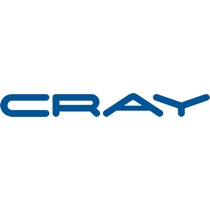 Today Cray announced the Bureau of Meteorology in Australia has awarded the Company a contract worth up to $53 million to provide a Cray XC40 supercomputer and a Cray Sonexion 2000 storage system. This further strengthens Cray’s leadership position in the global operational weather and climate community, as an increasing number of the world’s leading centers rely on Cray supercomputers to run their complex meteorological and mission critical models.
Today Cray announced the Bureau of Meteorology in Australia has awarded the Company a contract worth up to $53 million to provide a Cray XC40 supercomputer and a Cray Sonexion 2000 storage system. This further strengthens Cray’s leadership position in the global operational weather and climate community, as an increasing number of the world’s leading centers rely on Cray supercomputers to run their complex meteorological and mission critical models.
The Bureau of Meteorology produces a wide range of weather forecasts and meteorological services that have significant socio-economic impacts to a vast number of people, and we are honored that a Cray supercomputer will power their models,” said Peter Ungaro, president and CEO of Cray. “The amazing amount of data and science embedded in weather and climate models is a great example of how data-driven our world is becoming today. Our vision and experience in helping customers leverage the increased complexity of data-intensive, production-quality supercomputers is a huge part of why the world’s leading operational weather and climate centers continue to turn to Cray. We are excited to be back in the Bureau, and we look forward to a long partnership.”
 With headquarters in Melbourne and offices in each Australian state capital city, the Bureau of Meteorology is Australia’s national weather, climate and water agency. Its expertise and services assist Australians to better manage the impacts of their natural environment, including drought, floods, fires, storms, tsunami and tropical cyclones. Through regular forecasts, warnings, monitoring and advice spanning the Australian and Antarctic region, the Bureau provides one of the most fundamental and widely used services of government.
With headquarters in Melbourne and offices in each Australian state capital city, the Bureau of Meteorology is Australia’s national weather, climate and water agency. Its expertise and services assist Australians to better manage the impacts of their natural environment, including drought, floods, fires, storms, tsunami and tropical cyclones. Through regular forecasts, warnings, monitoring and advice spanning the Australian and Antarctic region, the Bureau provides one of the most fundamental and widely used services of government.
This contract marks a return of Cray systems to the Bureau, which in the past ran its weather models on earlier generation Cray X-MP and Cray Y-MP supercomputers. With the Bureau’s new Cray XC40 supercomputer, researchers and scientists will have the computational resources to run nearly eight times as many more daily forecasts than their current system with five times the improvement in global model resolution.
Supercomputer-based weather modeling offers a strategic advantage for countries looking to mitigate the impact of climate change and extreme weather. Over half of the world’s production weather forecasting centers run on Cray systems including: NOAA, UK MET, European Centre for Medium-Range Weather Forecasts, as well as prominent weather centers in Germany, Switzerland, Finland, and Mongolia.
Cray XC40 supercomputers are engineered to meet the performance challenges of today’s most demanding HPC users. Special features of the Cray XC40 supercomputer include: the industry-leading Aries system interconnect; a Dragonfly network topology that frees applications from locality constraints; optional DataWarp applications I/O flash SSD accelerator technology; innovative cooling systems to lower customers’ total cost of ownership; the next-generation of the scalable, high performance and tightly integrated Cray Linux Environment that supports a wide range of applications; Cray’s HPC optimized programming environment for improved performance and programmability, and the ability to handle a wide variety of processor types, including Intel Xeon processors, Intel Xeon Phi coprocessors, and NVIDIA Tesla GPU accelerators.
The Cray Sonexion 2000 storage at the Bureau will be delivered in phases and, all total, will include more than 12 petabytes of high performance storage capacity. Cray’s Sonexion storage system combines Cray’s Lustre expertise with a tightly integrated, unique design that allows for maximum scalability and performance. Management and operations are simplified through an appliance design with all storage components including software, storage and infrastructure.
Consisting of products and services, the multi-year, multi-phase contract includes contracted deliverables and options for future deliverables. If the options are exercised as expected, the total contract is valued at about $53 million, net of applicable taxes. The first phase of the contract is expected to be completed in 2016 and if exercised, the second phase is expected to be completed in 2019.



